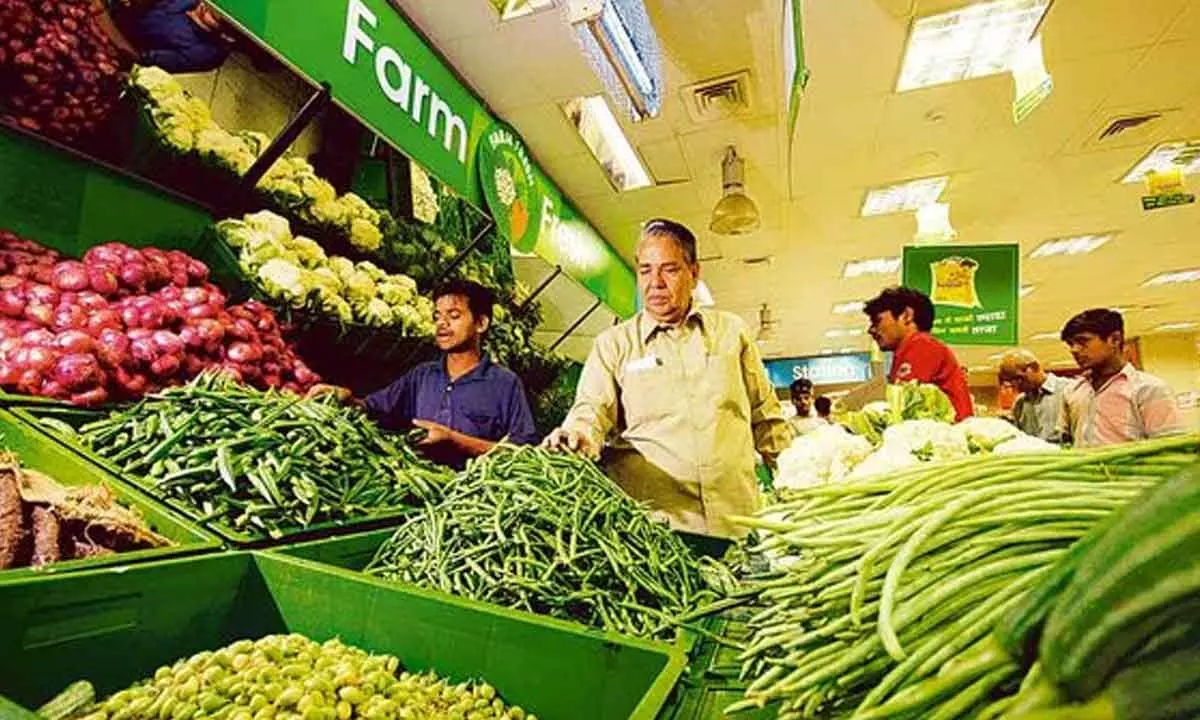4.75% headline CPI and higher food prices keep sequential momentum high
image for illustrative purpose

Even as the headline CPI inflation eased to a 12-month low of 4.75 per cent in May from 4.83 per cent a month ago, higher food prices will continue to keep sequential momentum high. It was largely driven by a lower-than-anticipated print for the food and beverages group. Although food and beverages inflation remained unchanged at 7.9 per cent as compared to the previous month, approximately, seven of the 12 sub-groups including spices, meat and fish and vegetables witnessed a cooling in their inflation prints, marking the seventh consecutive month of a reading above the seven per cent mark. The food and beverages inflation, Icra says, to ease somewhat in June vis-à-vis the May print, must remain elevated above the seven per cent mark in the month. This would help contain the headline CPI inflation print at sub-5.0 per cent in June. Thereafter, a favourable base is expected to lead to a sharp, albeit temporary, fall in the CPI inflation to 2.5-3.5 per cent in July and August. Food products continue to push up inflation with cereal, pulses, vegetables, and meat and fish products pushing up the index. The present heat wave has taken a toll on vegetable supplies with prices of potatoes, tomatoes and onions rising which will continue for another month or two.
Future inflation numbers, as per a Bank of Baroda study, will be driven by base effects, especially post-June, in all probability from July onwards. Otherwise one should recognize that there is no new crop of pulses coming in before October and hence typically prices would move up until they come in. With the impact of heat waves across the country being seen in higher food prices so far, the progress of the monsoon, both temporal and spatial, as per Emkay, will be crucial for the food price trajectory in the next few months. Upside potential for inflation also emanates from geopolitical developments and their impact on supply chains, as well as volatility in global commodity prices and in foreign exchange space.
Factors like liquidity could keep Reserve Bank of India (RBI) on tenterhooks on the policy management front. The overall inflation dynamics have been favourable, and unless there is a material upside deviation from forecasts, the ensuing liquidity surplus will not spur RBI into any blunt tools to permanently suck this liquidity, assuming that the global rates remain soft. The southwest monsoon had hit Kerala on June 1 and northeast India on June 5, which was two and six days, respectively, over the normal onset date. Nevertheless, adequate volume and dispersion of rainfall in the season remain key to improve the prospects for kharif crop and replenish the reservoir levels, which would be crucial to support rabi crop, and rein in food prices. Headline inflation is likely to decline due to favourable base effects in the coming months before rising again, but the monsoon progress will be crucial for the food price trajectory going ahead.

